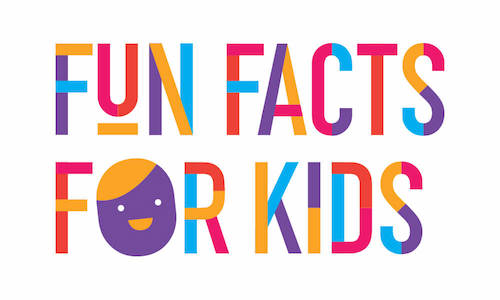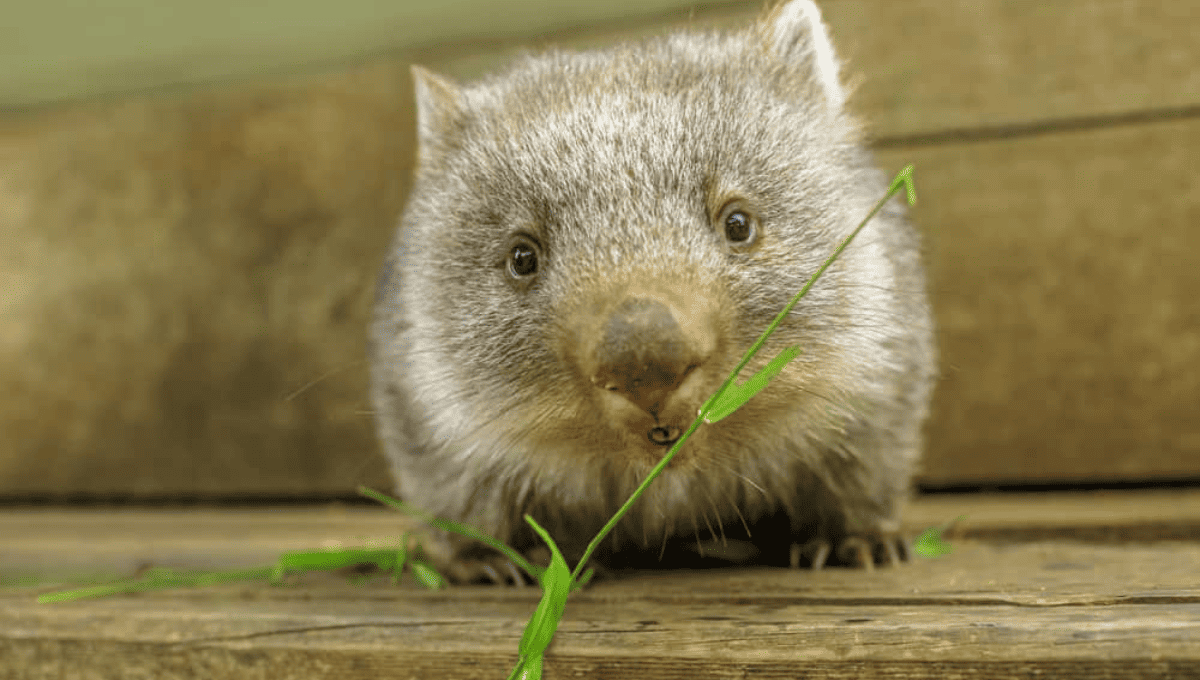If you are curious about these native Australian animals, then we have all the fun facts for kids about wombats! When you think about Australian animals, you can’t help but think of the wombat. Learn where they live, what they eat and so much more!
Don’t forget to read about all our other animal fun facts here!
Here are a few fun facts about wombats to get you started:
- Female wombats have a backwards facing pouch, but don’t worry, the babies don’t fall out!
- Wombats are nocturnal, which means they usually come out at night.
- Wombats have square shaped poop!
What exactly is a wombat?
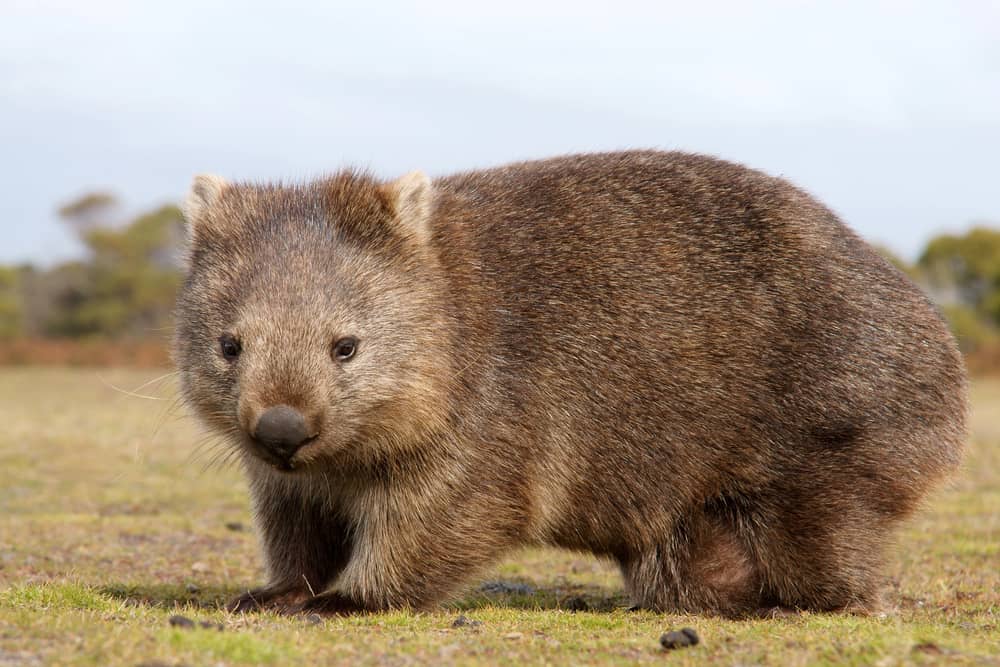
A wombat is a marsupial that is native to Australia, and is only found in Australia. Marsupials are a group of mammals that carry their babies in a pouch. Wombats are stout and sturdy with four legs and are covered in fur.
There are three species of wombat: The Common wombat, the Southern Hairy-nosed wombat and the Northern Hairy-Nosed Wombat.
The Common wombat can be found in South Eastern Australia along the coastline and high country. The Southern Hairy-nosed wombat is the smallest of the three species and is found in South Australia. The Northern Hairy-nosed wombat can be found in the states of New South Wales and Queensland.
How big are wombats?
Wombats can be up to 70 cm high, can grow to over 1 metre in length and can weigh around 30 kg! What wombats lack in height, they make up for in strength and sturdiness. They are excellent diggers due to their sturdy legs and claws.
Where do wombats live?
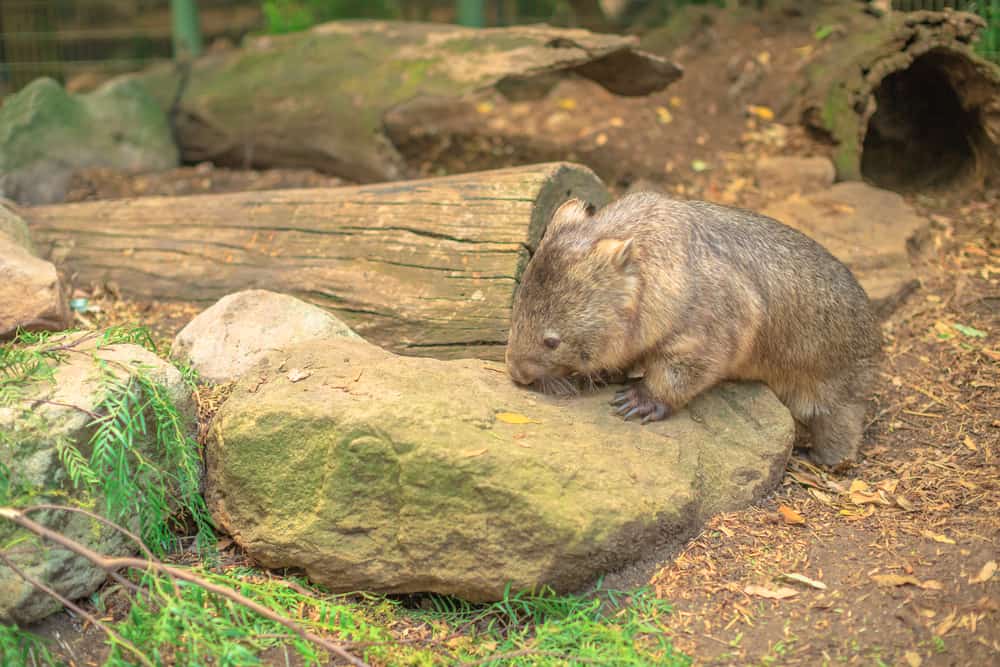
Because they are such excellent diggers, wombats live in burrows they dig underground. These burrows can be up to 30 metres long and several metres deep and often many wombats can live in one network of burrows. These burrows help wombats to avoid predators. Burrows also maintain a stable temperature, meaning they can escape the heat during the day and stay warm at night when temperatures drop.
Fun Fact – The collective noun for a group of wombats is called a Wisdom. A wisdom of wombats! (They could also be called a mob or colony of wombats).
Wombats are native to Australia and live in the south and east of Australia in a variety of different environments. They have adapted to many landscapes including grasslands, forests and mountains.
Want to do some wombat colouring in? We have found a great selection of books!
What do wombats do at night?
Wombats are nocturnal, which means that they sleep for most of the day and are awake at night. During the night they spend their time looking for and eating food. When they do sleep during the day, wombats sleep on their back with all four feet in the air!
What do wombats eat?

Wombats are herbivores, which means they eat plants. Their diet mainly consists of grasses, roots, and bark. Their teeth continue to grow throughout their lives to help them grind down tough vegetation.
Wombats spend up to eight hours every night eating and can wander up to 3 km away from their burrow to find food. They are very territorial about their feeding grounds, marking their territory with their scent and scat (poop).
Fun fact – Wombats have fairly poor eyesight, relying on scents and smells to find food.
It takes a wombat a long time to digest their food – up to two weeks – before pooping it out in a cube shape! It comes out as a cube due to the uniqueness of the wombat’s digestional tract and all the water being extracted first.
Looking for some wombat stickers for your room? Get some here!
What about wombat babies?
A female wombat can give birth every two years. Baby wombats are called joeys and are the size of a jellybean (around 1 gram) when they are born. They live in their mother’s pouch for six months until they are grown enough to venture outside on their own. They won’t leave the pouch permanently till they are more than nine months old.
Fun Fact – Female wombats have a backward-facing pouch to prevent soil from getting inside while they dig. Koalas also have a backwards-facing pouch.
If you want to dig like a wombat, have a look at these tools for kids!
Is the wombat endangered?
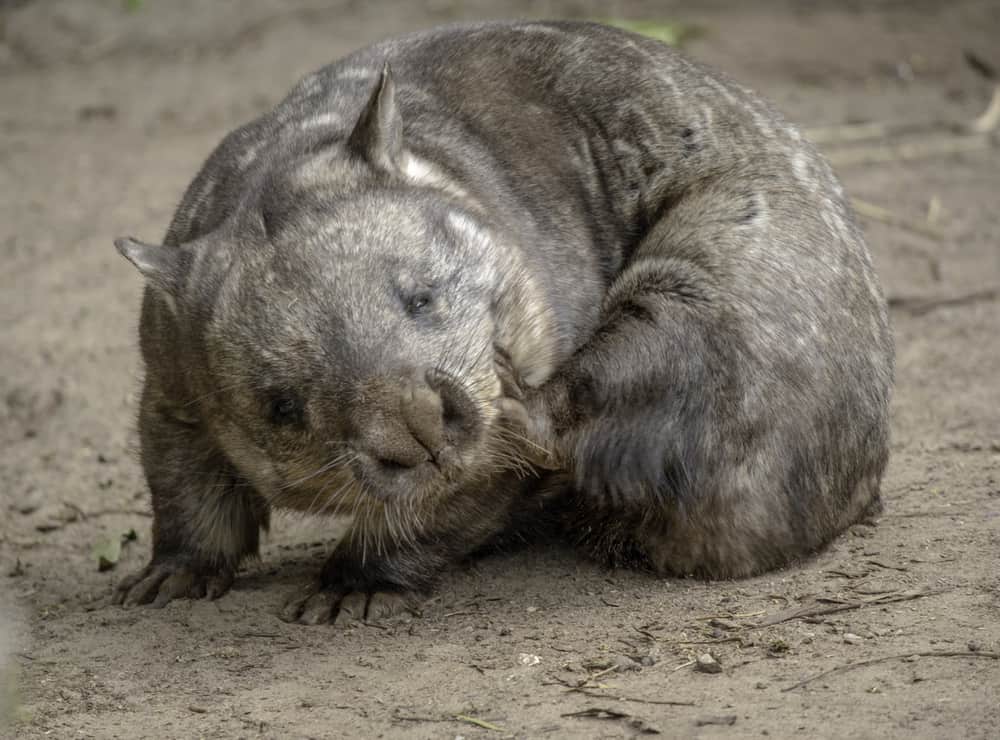
The Southern Hairy-nosed wombat is endangered, which means that the number of wombats are in severe decline and the species could become extinct. They are declining due to loss of habit and and increased competition for food (eg. cows, rabbits, sheep and goats). Everytime people clear land for more houses or farmland, we take away their native environment.
Wombats have some predators, including foxes, dingoes, dogs and eagles. When a wombat is threatened it can run at up to 40km/hr! They then dive head first into their burrow and block the entrance with their behind. Their rear end is covered with thick skin so a bite on the bottom doesn’t hurt them too much.
Take a look at these books on endangered animals around the world.
October 22nd is recognised as World Wombat Day, and is a chance to celebrate these furry animals. This day was chosen as it is the Spring planting season in Australia, when wombats become more active.
You can celebrate World Wombat Day by:
- Visiting a zoo or sanctuary
- Support a wombat conservation or
- Spending time learning about wombats and sharing your knowledge.
Some last minute fun facts about wombats:
- They are the closest living relative to the koala.
- Wombats can actually swim if needed, though they prefer not to.
- Wombats can live up to 15 years and even longer in captivity.
If you want to read some wombat stories, take a look at these books.
So there you have it, everything you need to know about these cute, square pooping animals! The more we understand about these unique animals, the more we can do to protect them from extinction.
Animal facts for kids
- Giant Panda Bear Facts for Kids
- Ant Facts for Kids
- Crocodile Facts for Kids
- Dolphin Facts for Kids
- Echidna Facts for Kids
- Bee Facts for Kids
- Australia’s Deadliest Animals Facts for Kids
- Cheetah Facts for Kids
- Endangered Animals Facts for Kids
- Kangaroo Facts for Kids
- Possum Facts for Kids
- Quokka Facts for Kids
- Koala Facts for Kids
- Dog Facts for Kids
- Cat Facts for Kids
- Butterflies Facts for Kids
- Dingo Facts for Kids
- Turtle Facts for Kids
- Penguin Facts for Kids
- Whale Facts for Kids
- Wolf Facts for Kids
- Dinosaur Facts for Kids
